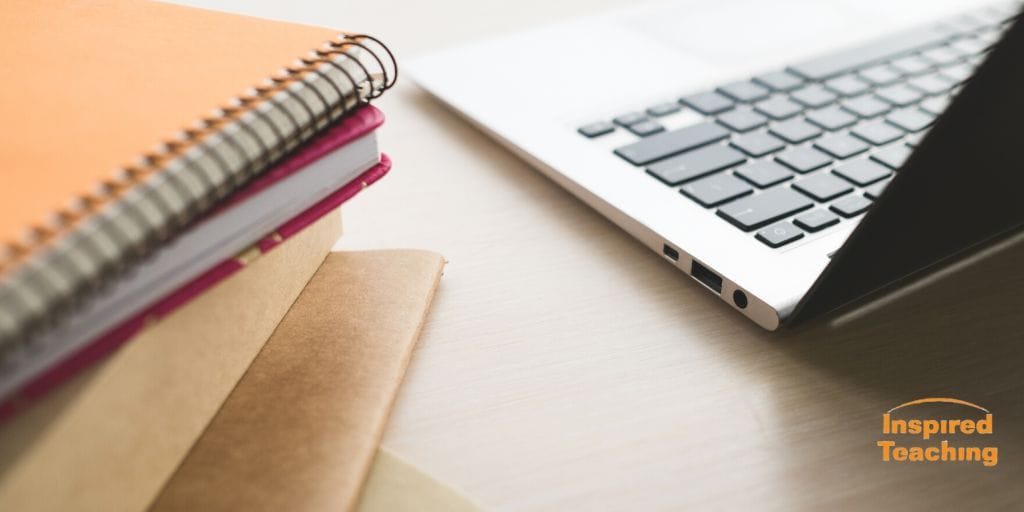The following activity is part of a series we’re creating to support students, teachers, and caregivers, during this unprecedented time. Read more about the project here. If you try this activity with your student(s), we’d love to see what you do. Share your journey via the #Inspired2Learn hashtag on your preferred social platform.
Created by: Jenna Fournel
Discipline: Social Studies
Age level: Middle – Secondary
Time: This is a long-term project and could take about a month to complete.
Materials: A digital recording device, video-making software such as iMovie (though there are many free apps that do this and clips can even be pasted together using PowerPoint)
Some of the most interesting and useful artifacts from history are the first-person accounts we find in journals and interviews. Students can gather those today as they chronicle and attempt to understand an event from the past or the things unfolding in our present.
Using free tools like ZOOM, they can record video interviews and compile them into a documentary that is easy to share with a real audience (including, but not limited to, their class and the people they interviewed!).
What to do:
Students choose a historical event that took place within the last 20-30 years during which they know family or friends were alive, and ideally, experienced firsthand.
They begin with online research of that event. You may want to provide them with an outline of what pieces of information they should gather and how you want sources cited. Examples include:
- When did the event take place?
- Where did it take place?
- Who were the key leaders involved in this event?
- What were the circumstances that led to this event taking place?
- How were people affected by it when it happened?
- How did life change after the event took place?
- Why was this event significant to history?
After this preliminary research, students craft interview questions for people who lived during this event. These questions should help to deepen their understanding of what took place as well as complicate some of the conclusions they may have come to from their preliminary research. Crafting these questions is a good teaching opportunity and would work well for the one-on-one office hours many teachers are holding right now. As you support students in crafting their inquiry, and figuring out who to interview, you might guide them with questions like:
- Who do you know whose experiences of this particular event might have been very different?
- In what ways do you think the experience of the leaders or key figures in this event would be different from those of people you know personally?
- Whose voices were missing from the various sources you used for your preliminary research?
- What questions do you still have after doing your initial research?
- What surprised you about what you learned?
- If you had been there when this event took place, what role would you have wanted to play? Who could you talk to who might have played a similar role?
Once the students have identified the people they want to interview and the questions they want to ask, they schedule their interviews and record them. (Again, ZOOM is a good tool for this.) Talk to the students about getting written permission from all the people they interview for inclusion in the documentary. Then these recordings can be put together with video editing software or plugged into a PowerPoint or Google Slides presentation.
Consider including a part of the assignment that asks students to reflect on what they’ve learned. Questions for this portion may include:
- What did you learn from the people you interviewed that stood out from the information you’d gathered from other sources?
- What did this experience teach you about the difference between first-person accounts and other sources of historical information?
- What new questions would you like to explore in this way?
Resources:
- Here is an example of a documentary video created by DC students for National History Day.
- The National History Day website has a great reference page on how to create a documentary with several examples.
- A lesson plan from POV on how to create documentaries.
- Student Documentaries: Nonfiction Comes to Life! (Scholastic)
- Stories Worth Telling: A Guide to Creating Student-Led Documentaries (Apple)
Extensions:
Consider hosting a “documentary film festival” in which students show their projects to the class and then provide a live Q & A afterward. If possible, open the “festival” up to friends and family so they can see the presentations in action.
Create a YouTube or Vimeo channel with all the documentaries in one place so students can view them at their leisure. Remember to include securing permissions in the interview process so students are allowed to share the clips of people they recorded.
Inspired Teaching Connection:
An immersive activity like this includes ALL the Inspired Teaching core elements. Learners are creating something with Purpose (informing and entertaining others) that also involves Persistence and Action. This is intense but Joyful work. The product as well as the process provide Wide-ranging Evidence of Student Learning. Children are quick learners, even when it comes to new tools like video editing apps, so giving them the freedom to learn and execute each news show on their own positions them as Experts of both the medium and the message. And most importantly, watching their production with appreciation for that expertise demonstrates Mutual Respect. Such a rich learning experience is also full of the 4 I’s, as Intellect, Inquiry, Imagination, and Integrity will all be hard at work.
See our instructional model here.

